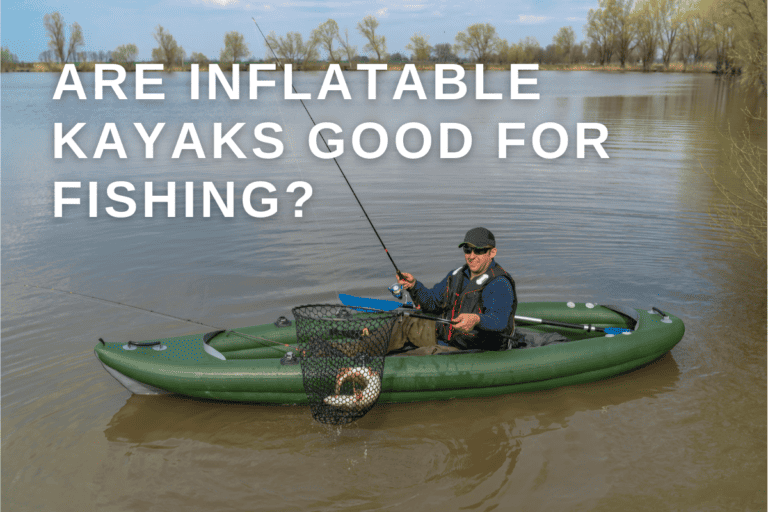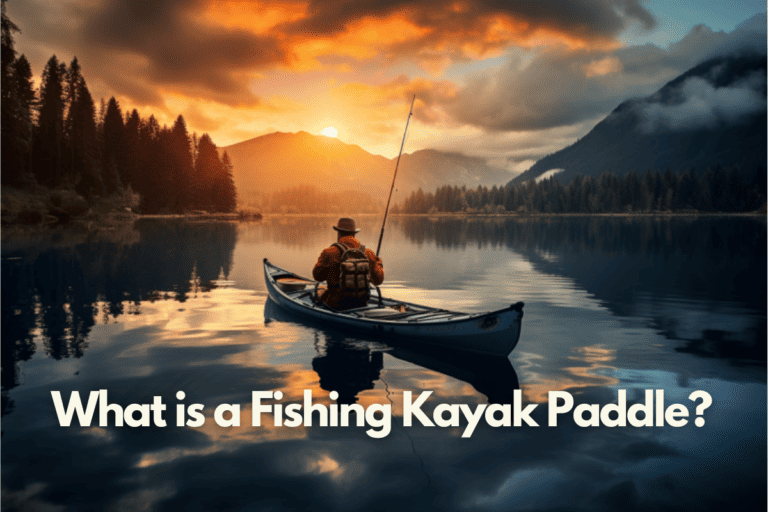(Simple Guide) How Much Wind is Too Much for Kayak Fishing?
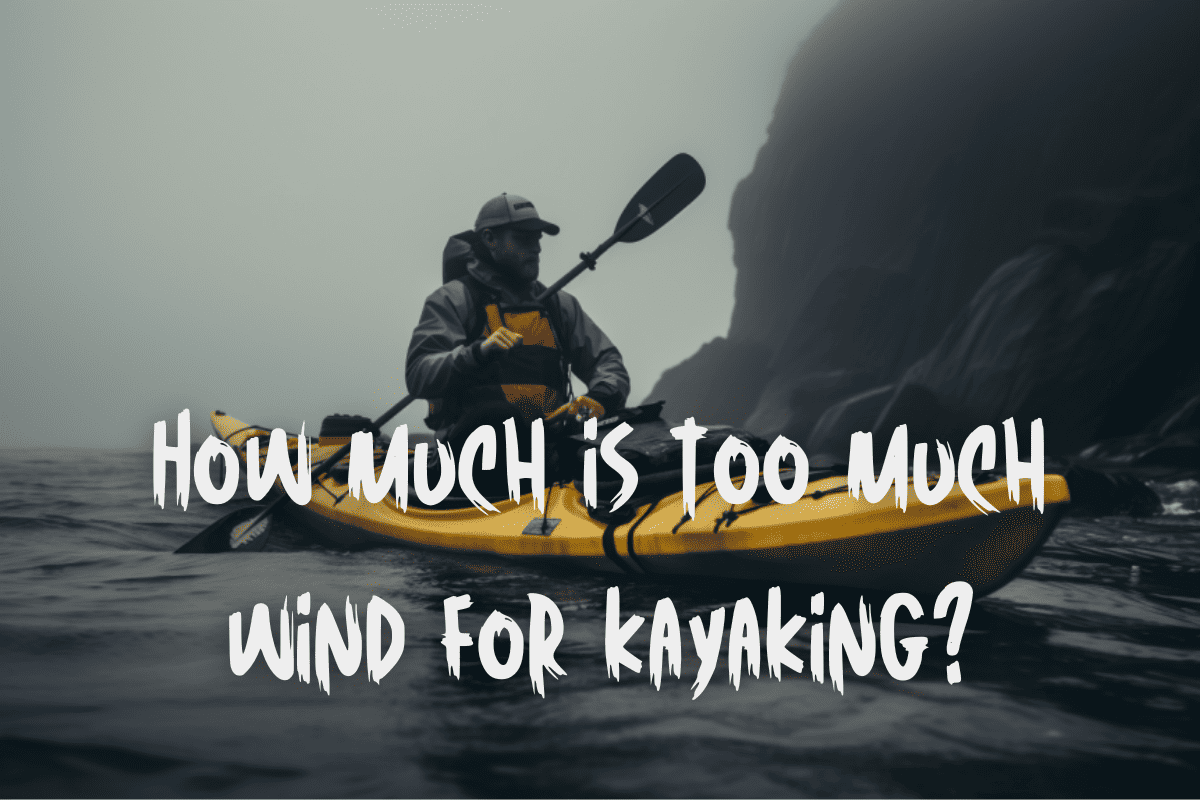
Ever tried to paddle out for a day of kayak fishing only to find the wind’s kicked up? It’s not just frustrating—it can be risky too. But don’t worry, we’re here to help you navigate these choppy waters.
You’ll learn just how much wind is too much for safe and enjoyable kayak fishing, and get tips on dealing with windy conditions.
Welcome aboard!
How Much Wind Is Too Much for Kayak Fishing?
Ever wonder how much wind is too much when you’re out kayak fishing? It’s a question that’s as important to your safety as it is to your success in reeling in that big catch. So let’s start by understanding the wind limit that is generally considered safe for kayak fishing.
| Wind Speed (knots) | Wind Speed (mph) | Safety Level for Kayak Fishing |
|---|---|---|
| Up to 8 | Up to 9 | Safe |
| 9 to 13 | 10 to 15 | Moderate Caution |
| Above 13 | Above 15 | High Caution/Not Recommended |
Wind speed plays a huge part in your kayak fishing experience. When it’s calm, you can easily maneuver your fishing kayak, enjoy the tranquility of the waters, and focus on your fishing. If it’s windy, however, the whole game changes.
Now, there’s a general rule of thumb in the kayak fishing community. Wind speeds up to 8 knots, which is about 9 mph, are considered a safe wind speed for kayaking on open waters. But remember, this is a guideline, not a strict rule. As a kayak fisher, you need to consider several other factors too.
The type of water you’re on, your experience level, the design of your fishing kayak – all these elements can affect how much wind is too much for you. For instance, fishing kayaks, with their raised seats and higher profile, are more susceptible to wind. So, if you’re in a windy situation, you might need to adjust your wind limit accordingly.
In the end, it’s all about knowing your limits, respecting the weather, and ensuring you have a safe and enjoyable kayak fishing trip.
Understanding the Impact of Wind on Kayaking
It’s crucial to comprehend how varying degrees of breeze can impact your kayaking experience. Understanding the impact of wind on kayaking is not just about skill enhancement; it’s about ensuring your safety. Be aware of how wind direction and speed can change the dynamics of your journey and how best to paddle in windy conditions.
Positive Impacts:
- Assists in propulsion when coming from behind.
- Can provide a refreshing breeze during hot days.
- Can add an element of challenge for experienced kayakers.
Negative Impacts:
- Can make paddling strenuous.
- Increases the risk of capsizing due to waves.
- Can push kayakers off course or away from the shore.
As mentioned, safe wind speeds for beginners typically range from 0-10 mph. In these conditions, the effect of the wind is minimal, aiding your propulsion and making your ride smoother. However, as the wind velocity increases beyond this range, it can make your kayak unstable and paddling more strenuous.
Wind direction is another critical factor. A tailwind can push you forward, making your journey easier. Headwinds, on the other hand, require more effort as you have to paddle against the wind. But the real challenge comes with offshore winds, which can push you away from the land and make returning a strenuous task.
Experienced kayakers may be able to handle stronger winds, but it’s always essential to consider your skill level and comfort when deciding whether to embark on a kayak fishing trip in windy conditions. You’re part of a community that values safety and camaraderie, and understanding the impact of the wind ensures you can enjoy your kayaking experience while also keeping it safe.
Factors That Influence Wind’s Effect on Kayaking
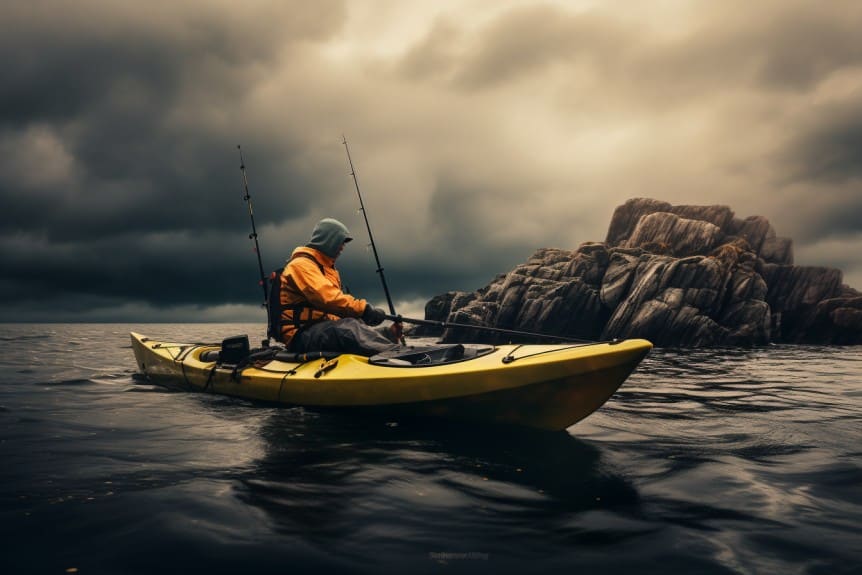
There’s a variety of elements that can impact how breezy conditions interact with your paddling adventure; we all understand how a sudden mph wind can drastically change our day on the water. Below is a list of the factors that influence wind’s effect on kayaking.
- Kayak Design and Type
- Kayaker’s Experience
- Size and Type of Water Body
- Wind Direction and Speed
- Surrounding Terrain and Shelter
Being aware of the wind’s effect on kayaking is key. The structure of your kayak, for instance, plays a significant role. Recreational kayaks, built for stability, might be trickier to maneuver in strong winds compared to sleeker sea kayaks. When the wind picks up, it can push your kayak, making it harder for you to maintain control and direction.
Your experience as a kayaker also matters. A novice may find it challenging to navigate windy kayak fishing conditions, while a seasoned kayaker might see it as just another part of the adventure. It’s all about understanding your abilities and limitations.
And don’t forget, the size of the water body also factors in. Larger bodies of water can create bigger waves in windy conditions, adding another layer of complexity to your kayak fishing expedition.
Before you head out, remember to check the wind forecast. It’s not just about ensuring a successful fishing trip, it’s about safety too. With the right preparation and understanding, you can enjoy your kayak fishing journey, no matter what the wind decides to do.
Navigating Windy Conditions: Tips and Techniques
Mastering certain techniques can greatly enhance your ability to navigate through windy conditions while kayaking. It’s a skill that not only ensures your safety but also fosters a sense of belonging among fellow kayakers, who value competency and preparedness. Below are tips and techniques to navigate windy conditions.
- Choose sheltered waterways.
- Stay close to the shore.
- Paddle at an angle to the wind.
- Be aware of weathercocking.
- Always have an exit strategy.
When paddling your kayak, consider the wind speed. If it’s under 15 mph, you’re generally good to go. Any higher, and you’ll need to lean into your skills and strategies. One effective method is to paddle at an angle to the wind. This helps you maintain control and direction, instead of letting the wind dictate your course.
Your kayak will naturally tend to turn into the wind, a phenomenon known as weathercocking. It’s crucial to anticipate this and adjust your paddle strokes accordingly. The more you practice, the more intuitive this adjustment becomes.
Another useful technique is to make the wind your ally. When you’ve got the wind at your back, you can use it to propel you forward. It’s like getting a friendly push along your journey. Remember, though, to always stay close to the shore and have an exit strategy in mind. Even the most experienced kayakers can get caught out by sudden changes in windy conditions.
In essence, kayaking in wind is about balance and adaptability. It’s about reading the conditions, knowing your limits, and making smart decisions. And, most importantly, it’s about the thrill of the challenge, the unity with nature, and the camaraderie of the kayaking community.
Preparing for Wind: Safety Measures and Precautions
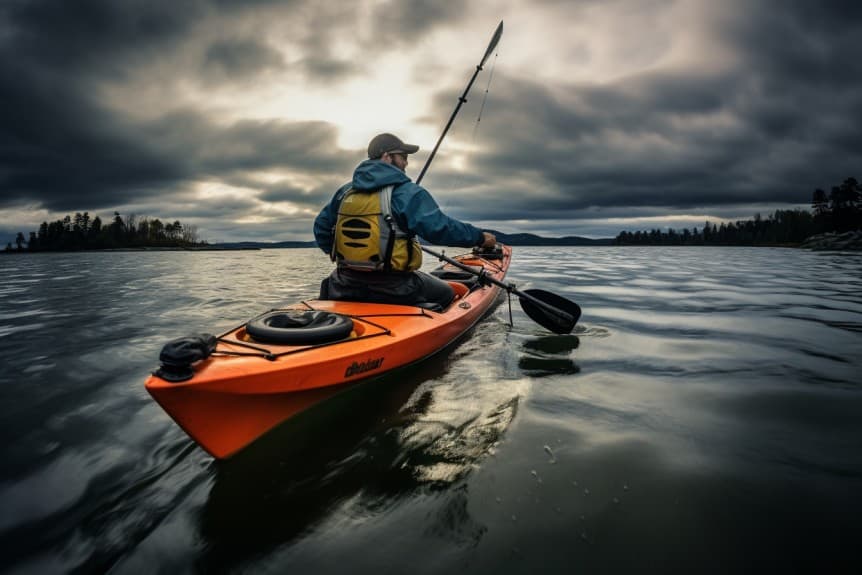
Prioritizing safety measures and precautions when anticipating a breezy day on the water is essential. Preparation is key to ensuring you stay safe and enjoy your adventure. Below are the precautions to consider.
- Check the weather forecast.
- Familiarize with local waterways.
- Wear appropriate clothing.
- Carry essential safety equipment.
- Kayak in groups when possible.
Check the weather forecast before you venture out. If wind speeds reach a level that makes you uncomfortable, don’t hesitate to postpone your trip. It’s better to wait for favorable conditions than to risk your safety.
Familiarize yourself with the local waterways; understanding your environment can significantly enhance your ability to handle the wind.
When it comes to gear, don’t skimp. Ensure you have the necessary safety equipment, including a life jacket, whistle, and a bilge pump. Wear appropriate clothing, preferably waterproof layers, to protect against the cold and wet conditions that strong winds can bring.
Remember, there’s strength in numbers. When possible, kayak in groups. If you capsize, it’s much easier to re-enter your kayak with assistance. Plus, sharing your kayaking trip with others fosters a sense of community and belonging, making the experience even more enjoyable.
In essence, preparing for wind involves safety measures and precautions that require thoughtfulness and preparation. But don’t worry, with these precautions in place, you’ll be well-equipped to tackle any breezy day on the water. So go ahead, plan your trip, and enjoy the thrill of kayak fishing amidst the wind.
Real-life Experiences: Challenges and Solutions in Windy Conditions
Now that you’re equipped with safety measures and precautions for windy conditions, it’s time to delve deeper into real-life experiences. The stories shared by fellow kayakers are enlightening, shedding light on the challenges and solutions in windy conditions.
Imagine you’re out kayaking on a seemingly perfect day. Suddenly, the weather shifts, turning your leisurely paddle into a battle against a forceful headwind. You’re striving to paddle against the wind, your muscles aching with each stroke. But, don’t despair. This is a scenario many have faced and successfully navigated.
In such situations, your recreational kayak becomes more than just a vessel; it’s your lifeline. Understanding your kayak’s limits and capabilities is crucial. For instance, if you’re out for kayak fishing, your fishing gear may add extra weight, making it harder to control your kayak on a windy day.
So, how do you handle this? Below are some tips.
Challenges:
- Being blown off course.
- Struggling against strong headwinds.
- Capsizing due to strong winds or waves.
Solutions:
- Adjusting paddling techniques.
- Seeking shelter or staying close to the shore.
- Using safety equipment and signaling for help
Kayakers who’ve been through such trials suggest reducing the kayak’s windage by lowering the body profile. Others advise using an anchor to maintain your position when fishing or taking shelter behind landforms.
It’s not just about solutions though; it’s about learning and growing. These experiences teach us to respect the unpredictability of nature and to continuously seek knowledge.
Final Thoughts
Navigating the gusty seas in your trusty kayak is no piece of cake. It’s a wild, adrenaline-pumping ride that tests your mettle to the core!
Remember folks, when the wind speed hits 15 mph, it’s time to reconsider your adventure. Always prioritize safety, heed the weather forecasts, and arm yourself with the right skills.
After all, you’re not just out there to wrestle with the wind, you’re there to reel in the big one!
Frequently Asked Questions (FAQ)
Q: How much wind is too much for kayak fishing?
A: The answer to this question can vary depending on several factors such as your skill level, the type of kayak you’re using, and the conditions of the water. However, as a general rule, it is recommended to avoid kayaking in winds stronger than 15 miles per hour (mph). Above this wind speed, it can become difficult to maintain control of your kayak and can pose potential danger to your safety.
Q: What are some signs that the wind is too windy for kayak fishing?
A: One of the easiest ways to determine if the wind is too strong for kayak fishing is by observing the behavior of the water. If you notice whitecaps forming on the surface of the water, it indicates that the wind is quite strong and may not be ideal for kayaking. Additionally, if you are struggling to paddle against the wind or if you find it difficult to maintain control of your kayak, these are signs that the wind may be too strong for fishing.
Q: Can I fish from a kayak in windy conditions?
A: Yes, you can fish from a kayak in windy conditions, but it is important to exercise caution and take certain precautions. It is recommended to fish in areas with some natural windbreaks such as hills, trees, or buildings. These can help reduce the impact of strong winds and make it easier for you to fish. Additionally, using an anchor or a drift sock can help you stay in one position and prevent your kayak from drifting away in strong winds.
Q: What is considered a safe wind speed for sea kayaking?
A: When sea kayaking, it is generally recommended to avoid wind speeds exceeding 20 mph. At this speed, the water can become quite choppy and it can be challenging to maintain control of your kayak. It is important to remember that the wind speed can vary depending on the specific location and conditions, so always check the local weather forecast and use your judgment before heading out for sea kayaking.
Q: What is the safe and dangerous wind speed for recreational kayaking?
A: When it comes to recreational kayaking, a wind speed of around 10 mph is considered safe and ideal for beginners. However, as you gain more experience and confidence, you can gradually increase your tolerance to stronger winds. It is important to always assess the current wind conditions and make a judgment call based on your skills and comfort level.
Q: Is it safe to kayak in 25 mph winds?
A: Kayaking in 25 mph winds can be challenging and potentially dangerous, especially for inexperienced kayakers. The strong wind can make it difficult to paddle, control your kayak, and maintain stability. It is generally recommended to avoid kayaking in winds of this intensity, particularly if you are not familiar with handling your kayak in strong winds.
Q: Can I paddle in whitewater kayaking with strong winds?
A: It is generally not recommended to paddle in whitewater kayaking with strong winds. Whitewater kayaking already presents its own set of challenges and adding strong winds to the mix can make it even riskier. Strong winds can affect the stability of your kayak and make it harder to navigate through the whitewater. It is best to wait for calmer wind conditions before engaging in whitewater kayaking.
Q: What precautions should I take when kayaking in windy conditions?
A: When kayaking in windy conditions, there are a few precautions you can take to ensure your safety. Firstly, always wear a personal flotation device (PFD) and dress appropriately for the weather. Secondly, paddle close to the shore or in more sheltered areas, especially if you are a beginner or if the wind is particularly strong. Thirdly, communicate your plans with someone on land and make sure to let them know when you expect to return. Lastly, pay attention to any changes in weather and be prepared to get out of the water if conditions worsen.
Q: What should I do if I get caught in strong winds while kayak fishing?
A: If you find yourself caught in strong winds while kayak fishing, it is important to stay calm and assess the situation. Try to paddle towards a more sheltered area or seek natural windbreaks such as cliffs or shorelines. If you are struggling to paddle against the wind, you can paddle at an angle or use a technique called “paddling into the wind” where you paddle forwards and slightly to the side in order to make progress. If the conditions become too dangerous, it is best to get out of the water and seek shelter until the wind subsides.
Q: Can I fish from my kayak in little wind?
A: Yes, fishing from your kayak in little wind can be quite enjoyable and peaceful. When the wind is minimal, it becomes easier to maneuver your kayak and maintain control. It also allows you to focus more on fishing rather than battling against the wind. However, always keep an eye on the weather conditions as wind can change quickly and unexpectedly.
